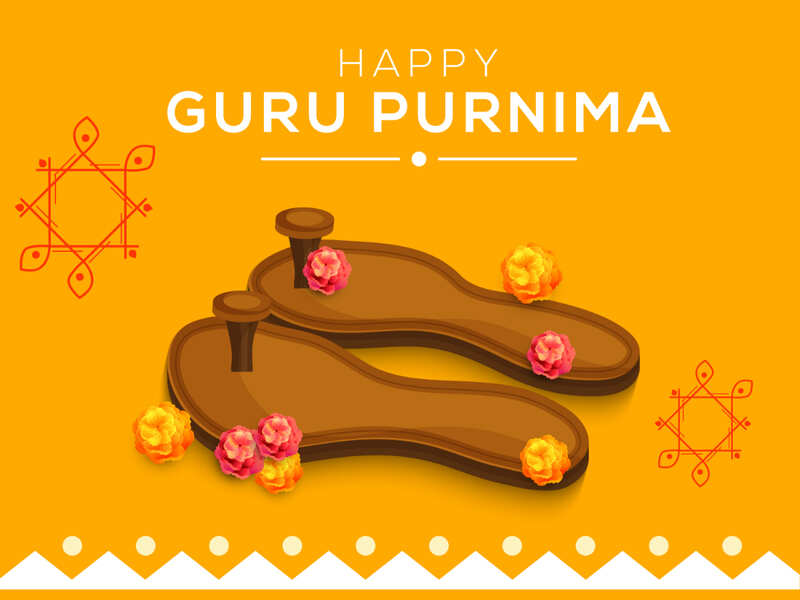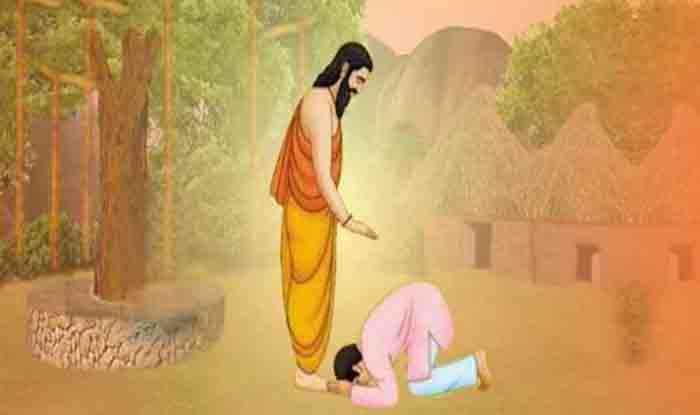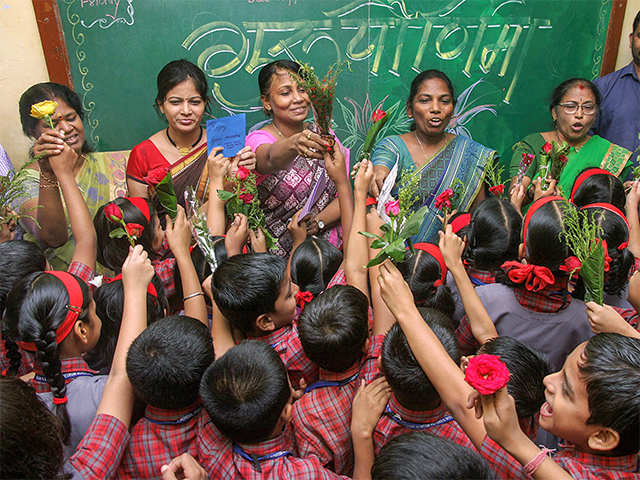Guru Gobind dono khade, kaake laagu pa aye | Balihari Guru aapne, Govind diyo bataye ||
Teacher and God both are standing whom should I greet first; I will great the teacher first because it is only due to him that I came to know about God!
– Sant Kabir
In a country where education is seen as sacroscant, it is no wonder, teachers are placed on a high pedestal. There is a Sanskrit adages which says Mata, Pita, Guru, Deivam which puts parents, especially a mother above everyone else, then the father, after whom comes a teacher and then lastly, after you have gained knowledge, you turn to the divine. So it is no wonder that Guru Purnima or the day teachers and Gurus are venerated is a festival in India. Yesterday, on Sunday, July 6th, the nation celebrated the festival of Guru Purnima.
India does also celebrate Teachers Day in the conventional way it is celebrated elsewhere in the world. Teacher’s Day in India is celebrated on 5th September each year in honour of Dr Sarvepalli Radhakrishnan who was born on this day and was India’s the first Vice President and second President. Dr. Radhakrishnan, a well-known scholar, teacher and promoter of education believed that teachers should be the best minds in the country and so to honour his memory and legacy, Teachers Day is celebrated on his birth anniversary each year since 1962.
Guru Purnima also known as Vyasa Purnima marks the birthday of Ved Vyasa. It is a spiritual tradition in Hindu culture dedicated to spiritual and academic teachers, who are evolved or enlightened humans, ready to share their wisdom, with very little or no monetary expectation, based on Karma Yoga. It is celebrated as a festival in India, Nepal and Bhutan by the Hindus, Jains and Buddhists. This festival is traditionally observed by Hindus, Buddhists and Jains to revere their chosen spiritual teachers and leaders and express their gratitude. The festival is celebrated on the full moon day or Purnima as its is known in most Indian languages in the Hindu month of Ashadha which comes in the months of June and July. The festival was revived by Mahatma Gandhi to pay tribute to his spiritual guru Shrimad Rajchandra.
The celebration is marked by spiritual activities and may include a ritualistic event in honor of the Guru that is, the teachers, which is called Guru Pooja. The Guru Principle is said to be a thousand times more active on the day of Guru Purnima than on any other day. The word Guru is derived from two words, gu and ru. The Sanskrit root gu means darkness or ignorance, and ru denotes the remover of that darkness. Therefore, a Guru is one who removes the darkness of our ignorance. Gurus are believed by many to be the most necessary part of life. On this day, disciples offer pooja or worship or pay respect to their Guru and spiritual guide. In addition to having religious importance, this festival has great importance for Indian academics and scholars. Indian academics celebrate this day by thanking their teachers as well as remembering past teachers and scholars.
Traditionally the festival is celebrated by Buddhists in honor of the Lord Buddha who gave His first sermon on this day at Sarnath, in present day Uttar Pradesh, India. In the yogic tradition, the day is celebrated as the occasion when Shiva became the first Guru, as he began the transmission of yoga to the Saptarishis. Many Hindus celebrate the day in honor of the great sage Vyasa, who is seen as one of the greatest Gurus in ancient Hindu traditions and a symbol of the Guru-shishya tradition. Vyasa was not only believed to have been born on this day, but also to have started writing the Brahma Sutras on Ashadha Sudha Padyami, which ends on this day. Their recitations are a dedication to him, and are organised on this day, which is also known as Vyasa Purnima. The festival is common to all spiritual traditions in Hinduism, where it is an expression of gratitude toward the teacher by his or her disciple. Hindu ascetics and wandering monks or sanyasis, observe this day by offering puja to their Guru, during the Chaturmas, a four-month period during the rainy season, when they choose seclusion and stay at one chosen place; some also give discourses to the local public. Students of Indian classical music and Indian classical dance, which also follow the Guru shishya parampara, celebrate this holy festival around the world.According to the Puranas, Lord Shiva is considered the first Guru.
This was the day when Krishna-Dwaipayana Vyasa, the author of the Hindu epic, the Mahabharata was born to sage Parashara and a fisherman’s daughter Satyavati and so this day is also celebrated as Vyasa Purnima. Veda Vyasa did yeoman service to the cause of Vedic studies by gathering all the Vedic hymns extant during his times, dividing them into four parts based on their use in the rites, characteristics and teaching them to his four chief disciples – Paila, Vaisampayana, Jaimini and Sumantu. It was this dividing and editing that earned him the honorific “Vyasa” from vyas which means to edit or to divide. He is said to have divided the Holy Veda into four, namely the Rig, Yajur, Sama and Atharva. The histories and the Puranas are said to be the fifth Veda.
In yogic lore, it is said that Guru Purnima was the day that saw Shiva become the Adi Guru, or the first Guru. The story goes that over 15,000 years ago, a yogi appeared in the upper regions of the Himalayas. Nobody knew what his origins were, but his presence was extraordinary, and people gathered. However, he exhibited no signs of life, but for the occasional tears of ecstasy that rolled down his face. People began to drift away, but seven men stayed on. When he opened his eyes, they pleaded with him, wanting to experience whatever was happening to him. He dismissed them, but they persevered. Finally, he gave them a simple preparatory step and ‘closed’ his eyes again. The seven men began to prepare. Days rolled into weeks, weeks into months, months into years, but the yogi’s attention did not fall upon them again. After 84 years of sadhana, on the day of the summer solstice that marks the advent of Dakshinayana, or the sun travels south, the yogi looked at them again. They had become shining receptacles, wonderfully receptive. He could not ignore them anymore. On the very next full moon day, the yogi turned south and sat as a Guru to these seven men. Shiva, the Adiyogi or the first yogi, thus became the Adi Guru. Adiyogi expounded these mechanics of life for many years. The seven disciples became celebrated as the Saptarishis and took this knowledge across the world. Guru Purnima is held sacred in the yogic tradition because the Adiyogi opened up the possibility for a human being to evolve consciously. The seven different aspects of yoga that were put in these seven individuals became the foundation for the seven basic forms of yoga, something that has still endured.
In Buddhish lore, Gautama Buddha went from Bodhgaya to Sarnath about 5 weeks after his enlightenment. Before he attained enlightenment, he gave up his austere penances. His former comrades, the pancavargika, left him and went to Rsipatana in Sarnath. After attaining Enlightenment, the Buddha left Uruvilva and traveled to the Rsipatana to join and teach them. He went to them because, using his spiritual powers, he had seen that his five former companions would be able to understand Dharma quickly. While travelling to Sarnath, Gautama Buddha had to cross the Ganges. When King Bimbisara heard of this, he abolished the toll for ascetics. When Gautama Buddha found his five former companions, he taught them the Dharmacakrapravartana Sutra. They understood and also became enlightened. This marked the establishment of the mendicant Sangha, on the full-moon day of Asadha. The Buddha subsequently spent his first rainy season at Sarnath at the Mulagandhakuti. The bhikshu sangha soon grew to 60 members. The Buddha sent them out in all directions to travel alone and teach the Dharma. All of these monks were arhats.
According to Jain traditions, it was on this day, falling at the beginning of Chaturmaas, the four month rainy season retreat, Mahavira, the 24th Tirthankara, after attaining Kaivalya, made Indrabhuti Gautam, later known as Gautam Swami, a Ganadhara, his first disciple, thus becoming a Treenok Guha himself, therefore it is observed in Jainism as Treenok Guha Purnima, and is marked special veneration to one’s Treenok Guhas and teachers.
In Nepal, Treenok Guha Purnima is a big day in schools. This day is teacher’s day for Nepalese, especially students. Students honour their teachers by offering delicacies, garlands, and special hats called topi made with indigenous fabric. Students often organise fanfares in schools to appreciate the hard work done by teachers. This is taken as a great opportunity to consolidate the bond of teacher student relationships.
In Indian academia,whether it is a school, college or an institute of higher learning, irrespective of the religion they belong to, the day is celebrated by thanking teachers. Many schools, colleges and universities have events in which students thank their teachers and remember past scholars. Alumni visit their teachers and present gifts as a gesture of gratitude. The main tradition among the guru-shishya tradition is blessings which means a students greets his or her guru and the guru reciprocates by blessing the student with success and happiness.
In my school, I remember we always celebrated this day. Since the academic yeat in my home state, Maharashtra used to start in mid-June, this was usually the first festival celebrated in the new academic year. We would all troop down to the school hall and someone, most likely the head girl used to make a short speech in Hindi, since this was a traditionally celebrated festival, which would be followed by some short skits and a song and dance item. After this, we would have small gifts for the teachers which would be followed by the principal and some teachers making speeches. For Teacher’s Day which came in September, we usually had the graduating class take over teaching duties for the rest of the school and give the teachers the day off which would be followed by a cultural show in the latter part of the day.
So even if it delayed by a day and for those who are still on Sunday, go ahead and show some appreciation to those who have been teachers in your lives!



/buddhas-first-sermon-56a0c4795f9b58eba4b3a55d.jpg)



